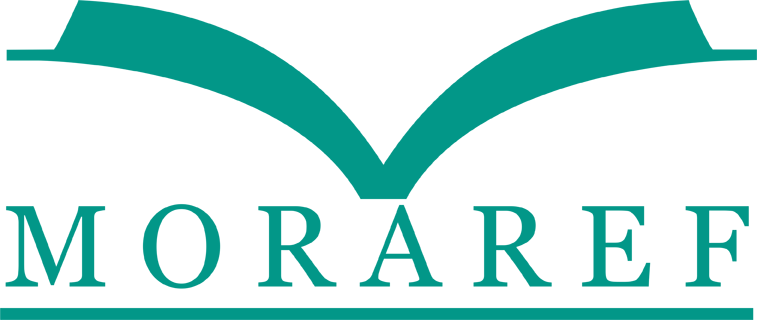Drinking Water’s Consumption in West Borneo’s Peatlands Area: Causal Factors of Caries?
Abstract
West Borneo has 1.73 million hectares of peatland areas. Therefore, people consume drinking water derived from rainwater or mountain water. In line with that, they also have a high caries rate. This water consumption might have a role in caries incidence. Besides, substrate, agent, host, and time could become other influence factors. This study aims to determine the factors that affect dental caries in West Borneo’s peat areas based on drinking water consumption.The research method was the facto exposé research. The population was children aged 12-14 years and taken by Cluster random sampling. The data were analyzed with correlation tests related to drinking water consumption which causing dental caries numbers.The study showed a significant difference in the Fluoride content of the four water types (p-value = 0.018).The influence of water consumption on caries was only 2%. However, the caries incidence among respondents who consumed mountain water was higher.Behavioral and tooth brushing activities significantly impacted respondents with different drinking water consumption.
Keywords
Full Text:
PDFReferences
A. M. Planas-Clarke, R. A. Chimner, J. A. Hribljan, E. A. Lilleskov, and B. Fuentealba, “The effect of water table levels and short-term ditch restoration on mountain peatland carbon cycling in the Cordillera Blanca, Peru,” Wetl. Ecol. Manag., vol. 28, no. 1, pp. 51–69, 2020, doi: 10.1007/s11273-019-09694-z.
S. K. Uda, L. Hein, and D. Atmoko, “Assessing the health impacts of peatland fires: a case study for Central Kalimantan, Indonesia,” Environ. Sci. Pollut. Res., vol. 26, no. 30, pp. 31315–31327, 2019, doi: 10.1007/s11356-019-06264-x.
Wahyunto, Rintung, and S. H, Peta sebaran lahan gambut, luas dan kandungan karbon di Kalimantan, 1st ed. Bogor, Jawa Barat, Indonesia: Wetlands International-Indonesia Programme, 2004.
M. Sejdini et al., “The Effect of Ca and Mg Concentrations and Quantity and Their Correlation with Caries Intensity in School-Age Children,” Int. J. Dent., vol. 2018, pp. 1–8, 2018, doi: 10.1155/2018/2759040.
K. Yadav and S. Prakash, “Dental Caries: A Review,” Asian J. Biomed. Pharm. Sci., vol. 6(53), no. January, pp. 1–7, 2016, doi: 10.15272/ajbps.v6i53.773.
Govern of West Borneo, “Statistic Center of West Borneo,” Pontianak, West Borneo, 2020. [Online]. Available: https://kalbar.bps.go.id/indicator/29/153/1/sumber-air-minum.html.
K. Kesehatan, “Laporan Nasional Riskesdas 2018,” 2018. [Online]. Available: http://dinkes.babelprov.go.id/sites/default/files/dokumen/bank_data/20181228 - Laporan Riskesdas 2018 Nasional-1.pdf.
E. Indermitte, A. Saava, and E. Karro, “Reducing Exposure to High Fluoride Drinking Water in Estonia—A Countrywide Study,” Int. J. Environ. Res. Public Health, vol. 11, no. 3, pp. 3132–3142, Mar. 2014, doi: 10.3390/ijerph110303132.
D. M. O’Mullane et al., “Fluoride and oral health,” Community Dent. Health, vol. 33, no. 2, pp. 69–99, 2016, doi: 10.1922/CDH_3707O’Mullane31.
S. R. Puspa Dewi, Y. Safitri, L. E. Lany, and R. S. Dwi, “Gambaran Kadar Fluorida Dalam Air Minum Dan Skor Dmf-T Anak 12 Tahun Di Sungai Pedado Palembang,” J. Ris. Kesehat., vol. 8, no. 1, p. 68, 2019, doi: 10.31983/jrk.v8i1.4089.
L. McLaren and S. Singhal, “Does cessation of community water fluoridation lead to an increase in tooth decay? A systematic review of published studies,” J. Epidemiol. Community Health, vol. 70, no. 9, pp. 934–940, Sep. 2016, doi: 10.1136/jech-2015-206502.
N. A. Al-eesa, N. Karpukhina, R. G. Hill, A. Johal, and F. S. L. Wong, “Bioactive glass composite for orthodontic adhesives — Formation and characterisation of apatites using MAS-NMR and SEM,” Dent. Mater., vol. 35, no. 4, pp. 597–605, 2019, doi: 10.1016/j.dental.2019.02.010.
T. Ishiguro et al., “Sodium fluoride and silver diamine fluoride-coated tooth surfaces inhibit bacterial acid production at the bacteria/tooth interface,” J. Dent., vol. 84, no. December 2018, pp. 30–35, 2019, doi: 10.1016/j.jdent.2018.12.017.
M. Matsumoto-Nakano, “Role of Streptococcus mutans surface proteins for biofilm formation,” Jpn. Dent. Sci. Rev., vol. 54, no. 1, pp. 22–29, 2018, doi: 10.1016/j.jdsr.2017.08.002.
W. Guissouma, O. Hakami, A. J. Al-Rajab, and J. Tarhouni, “Risk assessment of fluoride exposure in drinking water of Tunisia,” Chemosphere, vol. 177, pp. 102–108, 2017, doi: 10.1016/j.chemosphere.2017.03.011.
S. Aghapour, B. Bina, M. J. Tarrahi, F. Amiri, and A. Ebrahimi, “Distribution and health risk assessment of natural fluoride of drinking groundwater resources of Isfahan, Iran, using GIS,” Environ. Monit. Assess., vol. 190:137, no. 3, pp. 1–13, 2018, doi: 10.1007/s10661-018-6467-z.
M. J. Lambert, J. S. N. Vanobbergen, L. C. Martens, and L. M. J. De Visschere, “Socioeconomic inequalities in caries experience, care level and dental attendance in primary school children in Belgium: A cross-sectional survey,” BMJ Open, vol. 7, no. 7, pp. 1–7, 2017, doi: 10.1136/bmjopen-2016-015042.
L. Wang, L. Cheng, B. Yuan, X. Hong, and T. Hu, “Association between socio-economic status and dental caries in elderly people in Sichuan Province, China: A cross-sectional study,” BMJ Open, vol. 7, no. 9, pp. 1–10, 2017, doi: 10.1136/bmjopen-2017-016557.
WHO, Ending Childhood Dental Caries. World Health Organization 2019, 2019.
S. Lale, H. Solak, E. Hinçal, and L. Vahdettin, “In Vitro Comparison of Fluoride, Magnesium, and Calcium Phosphate Materials on Prevention of White Spot Lesions around Orthodontic Brackets,” Biomed Res. Int., vol. 2020, pp. 1–11, 2020, doi: 10.1155/2020/1989817.
DOI: https://doi.org/10.31983/jkg.v9i1.8101
Article Metrics
Refbacks
- There are currently no refbacks.
| View My Stats |











.png)


.png)
.png)








